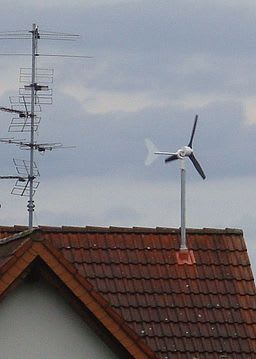

So, overall there is some doubt on our end that this device can actually deliver on its promises and outperform solar panels in most regions of the country. Therefore, the actual power produced would likely be much less than this 80% increase. But there would likely be a lot of turbulence which would cause a good portion of the incoming air to be deflected, which then won’t participate in the energy production. If we suppose that all the air hitting the surface actually makes it to the turbine (which it will not!), it can be shown that the power delivered would be no more than 1.8 times (or 80%) compared to a standard turbine. I suppose they have made some calculations to back that up, however, they go on to claim that their design will provide 3 times (300%) as much power as a regular turbine, but that it is not what we’ve concluded. The PowerPod promotional video claims that the air velocity is increased by 33% as it funnels through the intake. We asked Ecohome Engineer Denis Boyer to weigh in and he had the following to share: There are a family of ‘alternative’ vertical axis wind turbine designs that use rotary blades like this, the Zoetrope wind turbine is another example. Vertical axis turbines like this have for the most part turned out to be duds. Do vertical axis wind turbines work better? That would be something like advertising a set of kitchen knives as being ‘kid safe’, because they are too dull to cut anything. So, it’s ‘safe for kids’ if you put it in a location where it won’t work very well. True, but if it’s sitting at ground level in your fenced-in backyard where children play, then the limitations of any wind turbine set in, which is reduced wind speed on the ground compared to one placed higher in the air that isn't slowed by buildings and trees. Looking like an extra from a Star Wars movie, this small wind turbine for domestic use is, well, different !Īnother advantage the manufacturers promote for their compact domestic wind turbine is that it is safer for children. The wind turbines we have seen that aren't just anecdotal and where someone is serious about harvesting wind power, are generally seated on a tower or pole way above any obstructions in close proximity. Installing solar panels in areas of shade, or areas that see a lot of cloudy days will for sure affect the return on investment time, but a lack of sun does not instantly equate to a healthy supply of wind either, at least that's what our engineers reasoned.Īnd more importantly, wind speed at low altitudes has proven to be relatively limited. therefore in their opinion (our number crunchers), the turbine would have to be installed about 100 feet above any surrounding obstacles to optimize performance, despite the +40% claim on efficiency due to this funky design. Perhaps this 'could' be true in some places, but it's also a bit of an overreach in our opinion and it’s certainly the first of several eyebrow-raising claims that prompted us to dig deeper. Important in that claim is the 'could', so Ecohome's engineers decided to run some figures of their own just to see if this claim looks plausible. The makers of the PowerPod compact domestic wind turbine on Kickstarter claim that "for places that get less than 300 days of sun a year, a PowerPod could produce more power, for less money than solar panels" which really did make us wonder, as there are so many variables in play that we don't see how that can always be true. Are small domestic wind turbines any good? Created by a company in Salt Lake City, Utah named Halcium, the company is hopeful that the Powerpod will be a game changer in home renewable energy generation - which we are all for if this were to prove itself. We found the PowerPod compact home wind turbine on a Kickstarter campaign, which looks great in principle, but having seen a few home wind turbines in the past that failed to deliver on their promises, we thought it potentially looked a little too great. This is great to see, but the waters of sensible change will no doubt be muddied along the way by some failed attempts, some questionable claims, and perhaps even a little snake oil! Countless inventors are stepping up to the plate with the latest and greatest green technologies that will save the planet.


 0 kommentar(er)
0 kommentar(er)
